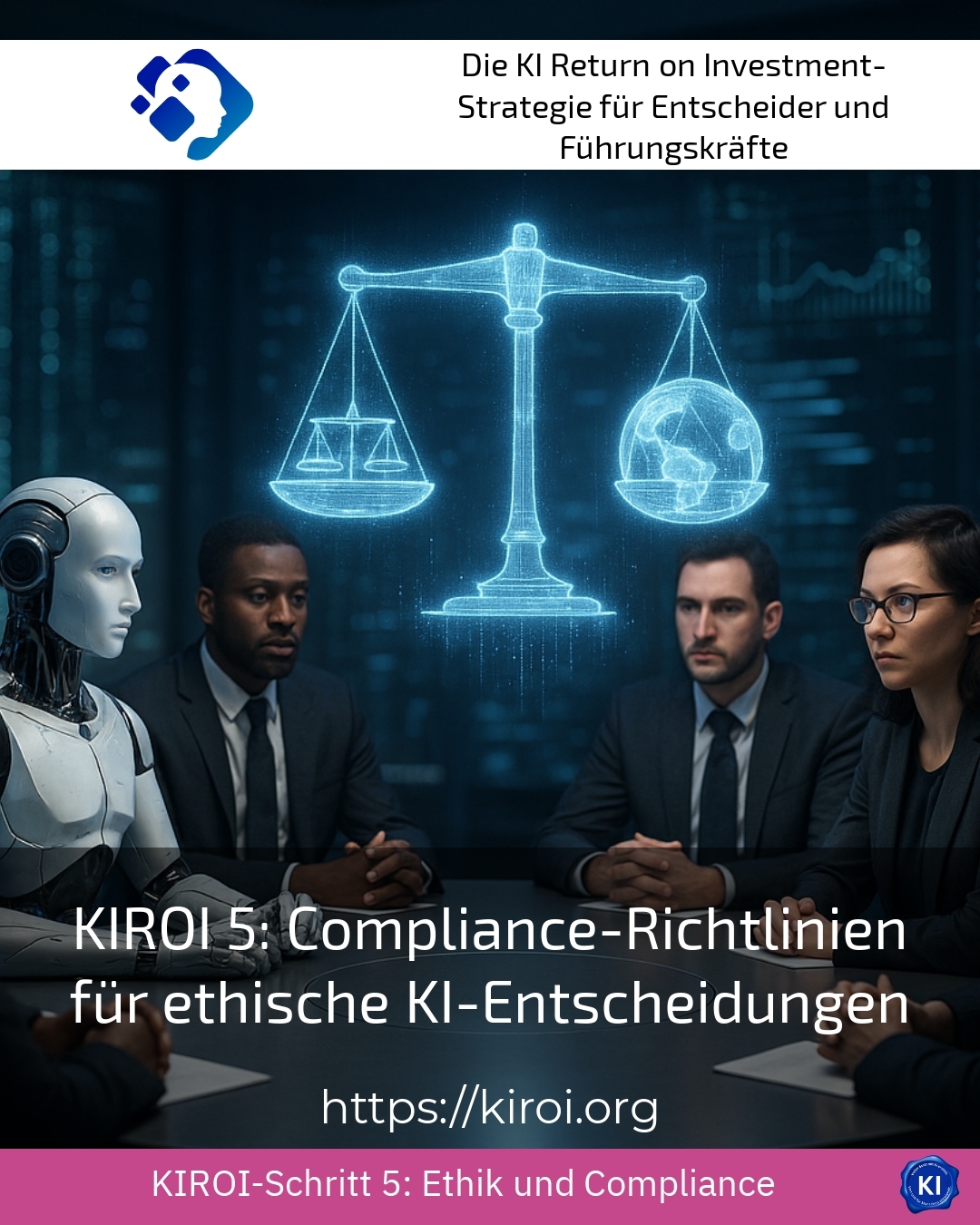Compliance guidelines as a guide for ethical decisions
Compliance guidelines are indispensable today when it comes to supporting ethical decisions with artificial intelligence (AI). They not only create legal certainty, but also help companies to organise the use of AI responsibly. Clear guidelines from various sectors help to avoid risks and build trust, especially in the case of complex systems.
Many companies report that compliance guidelines make the process of AI implementation much easier. This is because, on the one hand, they provide clear rules for dealing with sensitive data and automated decisions. On the other hand, they promote awareness of ethical principles throughout the organisation through training and audits.
Compliance guidelines in practice: examples from various industries
In the financial sector, for example, compliance guidelines help to ensure that AI-supported credit decisions are made without discrimination and on the basis of comprehensible criteria. Banks are integrating risk management and transparency requirements in order to fulfil legal requirements and at the same time maintain customer trust.
In the healthcare sector, compliance guidelines play a central role when AI systems support medical diagnoses or suggest treatment plans. Ethics and data protection take centre stage here, ensuring that sensitive patient data remains protected and decisions are clearly documented.
Compliance guidelines also create clear rules for dealing with AI-based monitoring systems or automated quality assurance in the area of industrial production. In this way, companies not only protect their processes, but also ensure the protection of employees and compliance with safety standards.
BEST PRACTICE with one customer (name hidden due to NDA contract)
A medium-sized technology company successfully introduced a comprehensive compliance strategy for AI systems. The early involvement of compliance officers and intensive employee training helped to implement legal requirements and permanently anchor ethical standards. This led to a measurable improvement in risk minimisation and at the same time strengthened customer confidence in the AI applications.
The importance of training and sensitisation
Compliance guidelines only have a lasting effect if everyone involved in the company understands and lives them. The development of targeted training is therefore an important part of any strategy. For example, staff at insurance companies can better assess which data is permissible in the context of automated claims checks and which decisions need to be particularly transparent.
In online retail, employees are trained in the use of AI systems that create personalised offers. Compliance guidelines support adherence to data protection and fairness so that customers are not disadvantaged or influenced by manipulative algorithms.
In the public sector, on the other hand, regular workshops promote the acceptance of AI-supported administrative processes. Compliance guidelines ensure that citizens' rights are respected and decisions remain transparent.
Compliance guidelines as a protective shield against risks
The use of artificial intelligence entails legal and ethical risks. Compliance guidelines help to recognise and mitigate these at an early stage. This applies in particular to data protection, non-discrimination and transparency.
For example, insurance companies can use guidelines to prevent their AI-based risk assessment from unintentionally penalising certain customer groups. At the same time, clear guidelines for data processing create legal certainty and reduce liability risks.
In the automotive sector, compliance guidelines ensure that autonomous driving functions are developed in accordance with ethical principles and legal requirements. This protects users and manufacturers from responsibility gaps and reputational damage.
In the area of HR management, a company avoids mistakes by regularly checking and documenting AI-supported applicant selection procedures for fairness in accordance with compliance guidelines. This ensures equal opportunities and transparency.
How to successfully implement compliance guidelines
The introduction of compliance guidelines begins with a precise risk analysis. Companies should systematically analyse their AI applications to determine the legal and ethical challenges they pose. Close collaboration between specialist departments, IT experts and the compliance function is recommended.
Clear responsibilities should also be defined and documented. Who is responsible for which topic? How are irregularities reported? Such organisational measures are essential for sustainable success.
Regular audits and adjustments to compliance guidelines ensure that they keep pace with technological developments. Many industries report that this iterative process is crucial in order to always act in a legally compliant and ethically sound manner.
My analysis
Compliance guidelines form the essential basis for making AI applications transparent, responsible and legally compliant. They promote ethical decisions and minimise risks in the application. Companies benefit from a systematic approach that combines training, monitoring and continuous adaptation. This structured support supports the sustainable success of projects and avoids pitfalls that can arise from ill-considered AI applications.
Further links from the text above:
AI and compliance - ki-kanzlei.de
AI Regulation & Compliance at Grant Thornton
Implementation guide for the AI Regulation
AI compliance: what it is, why it matters and how ...
For more information and if you have any questions, please contact Contact us or read more blog posts on the topic Artificial intelligence here.















